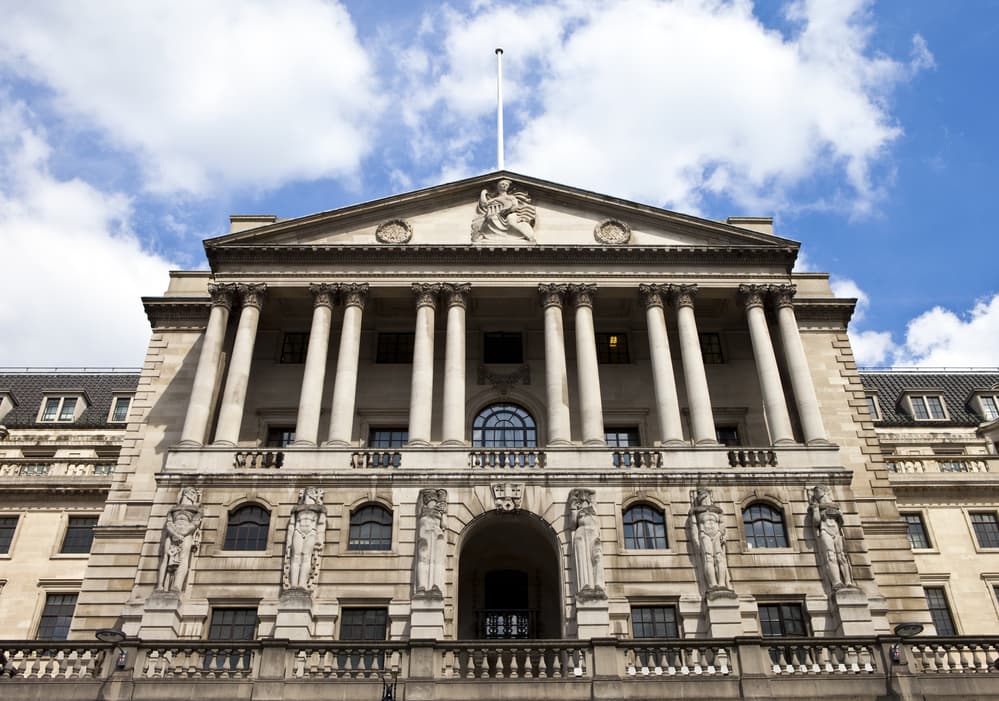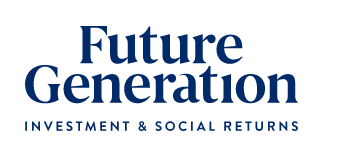This interview article has been written by an expert contributor Future Generation. First published 11/11/2022.
Can you describe your investment style?
At Firetrail, we build concentrated portfolios of our best ideas. Typically, we’ll have only 20-30 stocks in our portfolios, but we still look to build balance across the portfolio by having a good combination of undervalued growth companies (which we believe will grow faster than the market) and undervalued value companies (which might be out of favour).
The reason we have both investment styles is you can go through periods of “style out” and underperformance. After 17 years of running high conviction funds, we’ve found that a better way to generate consistent outperformance is to blend both styles and not be tied to one. Our bottom-up approach – where we look to identify really attractive undervalued companies – is what drives returns, as opposed to a macroeconomic-driven approach.
Are you concerned that concentrated portfolios lack diversity?
I actually think you can achieve diversity in a concentrated style. There is plenty of literature showing that once you get past 21 different assets within a portfolio, the diversification benefits are de minimis.

The key to getting diversity is knowing what the big risks are in the market at any point in time. Right now, it’s definitely interest rates and inflation. So, when we look at the portfolio, we want to understand how it is positioned in that environment.
We want to have a mix of rate-sensitive financials that will do well in a higher inflationary, higher rate environment. But we also want to have some stocks that will do well if rates start to fall. It’s only going to take one inflation announcement that’s lower than expectations for rates to start to fall or, at least, for the trajectory to slow. So yes, our portfolio is concentrated, but we can still diversify the portfolio across different stocks with different themes that will either outperform or underperform, depending on the macro environment.
What companies do you think will outperform in a higher rate environment?
There are a number of different financial services companies that could outperform in a higher rate environment. The obvious ones are the banks because as rates and bond yields increase, home loan interest rates are put up far more quickly than the rates on saving accounts. So the margins that the banks make on these rally large pools of assets increases – and that flows straight down to the bottom line.

The challenge for banks over the next three years is that a lot of that could be offset by lower volumes of mortgages and, potentially, an increase in bad debts.
I think an underappreciated part of the market, which still has that same sensitivity to higher rates, is insurance. Over the past few years, the price for premiums has increased significantly.
Take QBE (ASX: QBE), for example. Its cumulative premium price growth has been around 30% over the past two-and–a-half years, so its revenue growth is massively outstripping inflation. What’s even more interesting is that QBE then takes that premium and invests it into fixed interest securities, like 2-3 year government bonds, which they hold through to maturity. Obviously, the amount of interest that they earn on that float has been going up significantly and every 1% increase in rates equates to around an 18% uplift in QBE’s earnings. So the business is really sensitive to rate rises. You can buy QBE on 7-8 times earnings at the moment, with some pretty strong earnings growth coming through over the next few years, so I think that’s a business that really stands out.
Are you worried about large claims against insurers, such as from the recent floods?
Yeah, so on the flip side for insurers, there can be these large left-field losses. You want to make sure you’ve got adequate reserving and so insurers have something called a reserve ratio. They put money aside, based on their assessment of the risk of losses in their insurance book. QBE appointed a new CEO 18 months ago, and he’s come in and rebased their reserve to be about 40% higher than the average amount claimed over the past five years. So even if we are in an environment where claims are a lot higher, there’s enough fat in there to cover any natural disasters that come out of left field.
Firetrail Investments was established in 2018
We’re a young firm but we’ve got a deep history of working together. Patrick Hodgens, Blake Henricks and the rest of the team all worked together at Macquarie, managing the Macquarie High Conviction Fund, which was one of the top performing funds in the country until we left in 2017.

We also managed the Macquarie Australian Small Companies Fund and a couple of other hedge funds. We’ve managed portfolios in the same way, using the same philosophy and approach, for a long time.
Really, the only thing we changed at Firetrail was the badge. We started Firetrail because we wanted to build an enduring business together. Fast forward to today and we’ve gone from the ten of us who left Macquarie to 24 of us in the team. We’re now managing global equities in the same concentrated manner, so it’s been an exciting journey.
How has Firetrail’s performance fared against your expectations?
We got off to a really strong start, but then we had a challenging FY19, particularly for our high conviction strategy. Over the past 17 years, we’ve had four years where we’ve underperformed the index – and FY 19 happened to be one of those years. That was a challenging period, but you have those when run a concentrated portfolio. Fast forward to today and we’ve delivered the outperformance that our clients are looking for.

There will always be periods of volatility when you’re building a concentrated portfolio. Sometimes, we get things wrong and we try to identify and resolve those mistakes as quickly as possible. At other times, the market disagrees with us in the short term. But we take a medium term view. We look at a business today and say, “Where’s that business going to be in three years’ time? Does it look attractive today, given what we think is going to happen in the future?”
One of the most common mistakes I see in markets is investors taking what’s happened recently and extrapolating it into the future, believing that it will stay the same forever. So we love periods of volatility because it allows us to identify and take advantage of those undervalued opportunities. I like to think that volatility happens for you, not to you.
Ideally, what investment timeframe should investors allow you?
We typically use a three year horizon in earnings forecasts, which is a little longer than the market tends to use. Typically, the market looks 12-18 months out, which we don’t feel is long enough to allow a business strategy or an opportunity to develop.

Management teams usually forecast their business strategy out to 3-5 years, so beyond three years, you start dealing with lot more unknowns and assumptions. Our starting point with investors is that if they give us three years to outperform, then that’s a reasonable timeframe.
If you need a positive return within a 12 month horizon, the reality is you can only invest in cash or something similar to cash. But the biggest risk to me is not whether you generate a positive return, it’s whether you generate a substantial enough return to outpace inflation!
What is your 1- and 3-year market outlook?
The next 12 months are going to be really challenging because there’s so much uncertainty with regards to the next inflation announcement, and that’s really what markets are trading on at the moment. But if you take a three year view, then right now is a better time to invest in markets than it was two years ago. Valuations have come right down, so a lot of opportunities are making a lot of sense right now. Yes, we are going into an economic slowdown, but equity markets – counterintuitively – don’t really mind an economic slowdown. I’m feeling really good about our portfolio over the next three years.
Do you think valuations have further to fall?
Looking across the different markets, the Australian market is trading at roughly 12 times earnings, China is trading on 10 times, Europe’s on 10 times and the US is trading on 14-15 times, but a lot of that’s being held up by the mega-caps. So I think these markets all offer really attractive entry points. Yes, markets could go lower from here, but I think if you’ve got a three-year view, it’s a pretty good return environment for equity investors.
Speaking of mega-caps, you tend to operate more in the mid-cap space. Why is that?
We’ll invest anywhere across our Australian and global strategy, but it’s safe to say that, right now, we’re seeing more of an opportunity in the mid-cap space. Typically, we find that bottom-up opportunities are better in mid-caps because they’re less well covered by sell side analysts. You don’t have 20-plus really good analysts covering these stocks, you tend to have 5-8 more junior ones. That creates more opportunities for mispricing, so it’s much more fertile hunting ground.

Also, there are two ways you can make a lot of money in investing. The first is through a smaller company becoming a lot bigger and the second is through a business turning its fortunes around. In the mid-cap space, you can get a combination of the two. It’s much easier for a mid-sized company to become a large company than it is for a large company to become even larger.
Finally, over the past five years, the mega-cap Tech stocks have really dominated. They’ve become so large that they’ve become almost cyclical. Rather than being a bottom-up opportunity, they’ve become more dependent on the economy and the defensiveness of those businesses has changed because they don’t have the same growth opportunities ahead of them. That doesn’t mean we won’t invest in mega-caps in the future. Sometimes the market can think a cyclical slowdown is structural, and that can create an investment opportunity.
So how many mega-caps are in your portfolios?
In our global fund, we only own one of the top 50 stocks by market capitalisation – and that’s Microsoft (NASDAQ: MSFT). In our Australian fund, we’d have maybe two stocks in the top 20. We’re very tilted to the mid-caps, but if we see a big opportunity in the mega-cap space we’ll go there.
What defensive businesses do you think will be able to weather the economic slowdown best?
One of the biggest mistakes people make when investing is the price they pay for an asset. It’s similar to buying a house. You can buy the best house with the nicest view in the best suburb, but if you pay $1 billion for that house, it’s a hopeless investment. Likewise, I think the biggest risk you could take right now is overpaying for a defensive-style business.

People are crowding into supermarkets at the moment, pushing up their valuations, because the rhetoric is that they’re good inflation protectors and can do well during an economic slowdown. But the reality is that all supermarkets are worried about people trading down to different peers. If you’re Woolworths or Coles, you’re worried about Aldi. These businesses, which are earning pretty high margins, are going to invest in price to protect market share, and that’s going to put pressure on earnings. They’re also people businesses, so they do have inflationary pressures coming in through wages.
I don’t think defensive businesses in equities look all that attractive at the moment. There are better opportunities in companies that have a bit more cyclicality and are trading at massively discounted valuations. Yes, you lack the earnings certainty of a defensive, but when you’re paying such a low valuation it can be worth it to have a bit more volatility in the earnings – particularly if that volatility is to the upside!
The only defensive businesses that look attractive at the moment are in healthcare, where you can still get some pretty good valuations. We like CSL and ResMed.
Firetrail recently launched a new fund, the S3 Global Opportunities Fund. Who are you picking to be winners in the energy transition?
S3GO is interesting because we’re looking for companies facing some sort of positive change trajectory over the next three to five years that will help them command the premium that sustainable businesses do. That could be improving the quality of the business’s earnings, it could be reducing debt, or it could be contributing to a more sustainable future.
With that as the framework, it makes it difficult for S3GO to invest in things like fossil fuels – even though we believe we’re going to have higher energy prices for a long time as a result of material under investment in energy markets over the past seven years.

So the question for S3GO is: how do you gain exposure to higher energy prices without investing in fossil fuels? The answer sits within consumer staples within agriculture. Over the past five years, you’ve seen the correlation between the price of soybeans and the oil price rise to around 80%. This is because soybean has 38% protein which you can convert into diesel and create a renewable diesel substitute. This is a potentially massive market, particularly in Europe and California, where there are very attractive tax credits and concessions for renewable fuels. Interestingly, one of the biggest customers for renewable diesel are the big oil and gas players. They look to mix it with traditional petro-diesel to reduce overall carbon emissions.
So one of the ways that you can gain exposure to higher energy prices without investing in fossil fuels is to look at derivatives of sustainable fuels. A key holding within the S3GO portfolio is Archer Daniels Midland, which is an agricultural supply chain expert across soybeans, wheat and corn.
Another big winner could be tallow, which is basically animal fats. Around 50 per cent of meat carcasses are put to waste in the US, when you could actually render that down into tallow and convert it into renewable diesel. Converting waste to energy will be a big growth opportunity.
But it’s going to take a real mix of everything if we are going to get anywhere near where we need to get to. Some of the biggest winners will be companies that make things more efficient. Take an air conditioner, for example. Installing a new air conditioner will result in a 30% reduction in your CO2 profile straightaway, while also significantly bringing down your energy bill. You could gain exposure to that theme through a company that does heating pumps and air conditioning units. Or one that improves your insulation at home. There’s a million different ways you can play it!
How do you incorporate ESG into your investing strategy?
- You’ve got to be able to value it. So number one, you’ve got to look at the risk or the opportunity for this business in terms of ESG. At the moment, the big focus is on the “E”, so we’ve been asking questions like: How is this going to affect the future sustainability of the business? Are there going to be assets that become stranded or unusable? Is there likely to be regulation that comes in?
- Number two is you’ve got to be able to measure the impact.
- Number three is you’ve got to be able to risk weight the likelihood of this scenario. Sometimes people can put so much emphasis on the risk side of ESG that it creates an investment opportunity. If investors are extrapolating and we think their extrapolation is unreasonable or unlikely, it can be an opportunity to buy a company at a really attractive price.
What are the two key lessons you’ve learned from your time in the market?
- Every company has a price. Sometimes good companies turn out to be really bad investments if you overpay. I think most Australian investors learned that through the Telstra IPO.
- Number two is that sentiment drives markets and assets in the short term, but fundamentals will drive a business in the medium-to-long term. Having a medium-term horizon actually allows you to identify uncomfortable opportunities. A company may be dragged down by macro and sentiment in the short term, but it will trade back towards fundamentals in the long-term. So stick to the fundamentals!
Finally, we are really grateful that are one of our pro-bono fund managers. Why do you do it?
We recognise that we’re in a really fortunate industry and when you’re in that position, it’s incumbent on you to try to give back in a meaningful way. One of the best ways we can give back is by utilising our investment skills to benefit others.
I think what Future Generation does is outstanding because it takes all of that investment skill and expertise and uses it to help others in a really sustainable way. It’s such a great model.

Future Generation Australia (ASX: FGX) and Future Generation Global (ASX: FGG) are Australia’s first listed investment companies to provide both investment and social returns.
The companies provide shareholders with exposure to leading Australian and global fund managers, who aim to deliver a stream of fully franked dividends and capital growth, without charging any management or performance fees. Their generosity allows the Future Generation companies to invest 1% of net tangible assets each year in their not-for-profit partners. Shareholders decide which not-for-profits will receive the donation, whether it’s supporting children and youth at risk (FGX) or investing in the prevention of ill mental health (FGG). The Future Generation companies have donated $65.2 million since inception.
Prior to making an investment decision, retail investors should seek advice from their financial adviser. This document is intended as general information only.
More About
- General
- Expert Articles
- Meet the Manager
- Banks
- Inflation
- Interest Rates
- Future Generation
- Kyle Macintyre
- Climate Change
- ESG
- Diversification & Asset Allocation
- Valuations